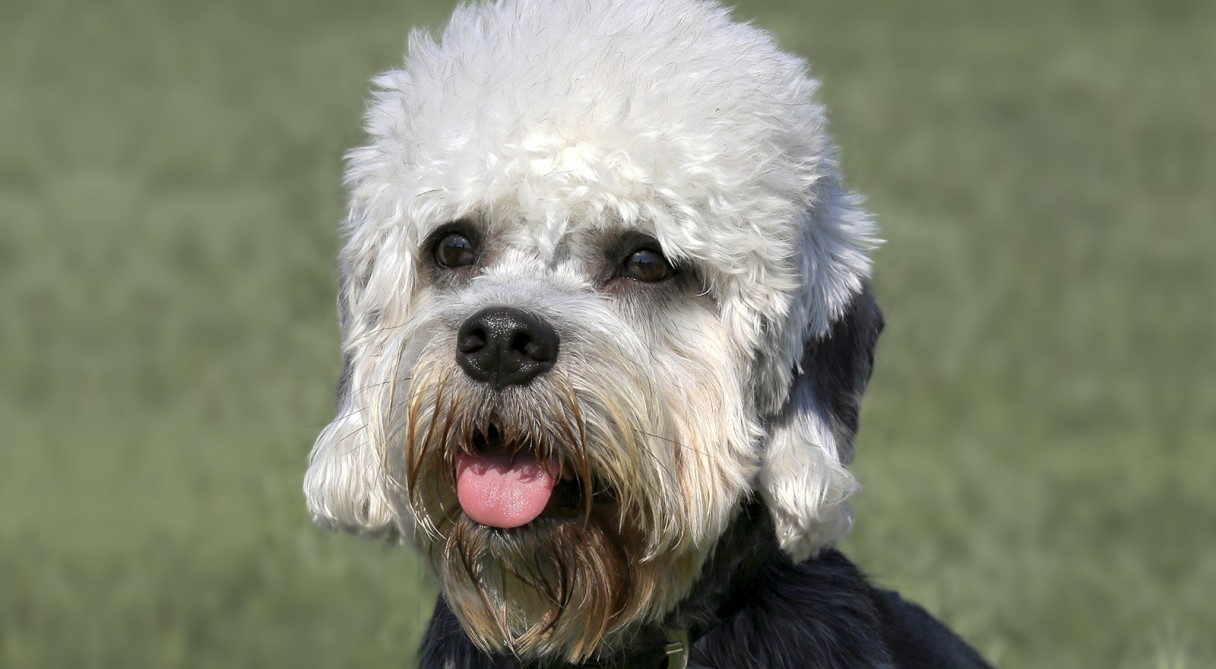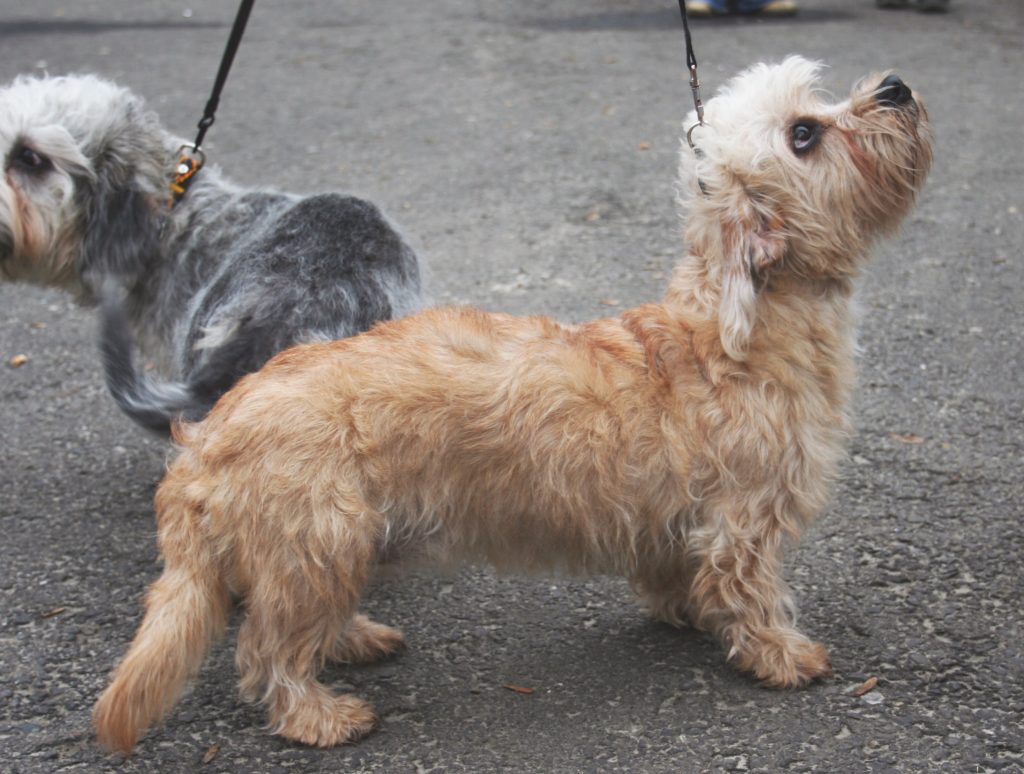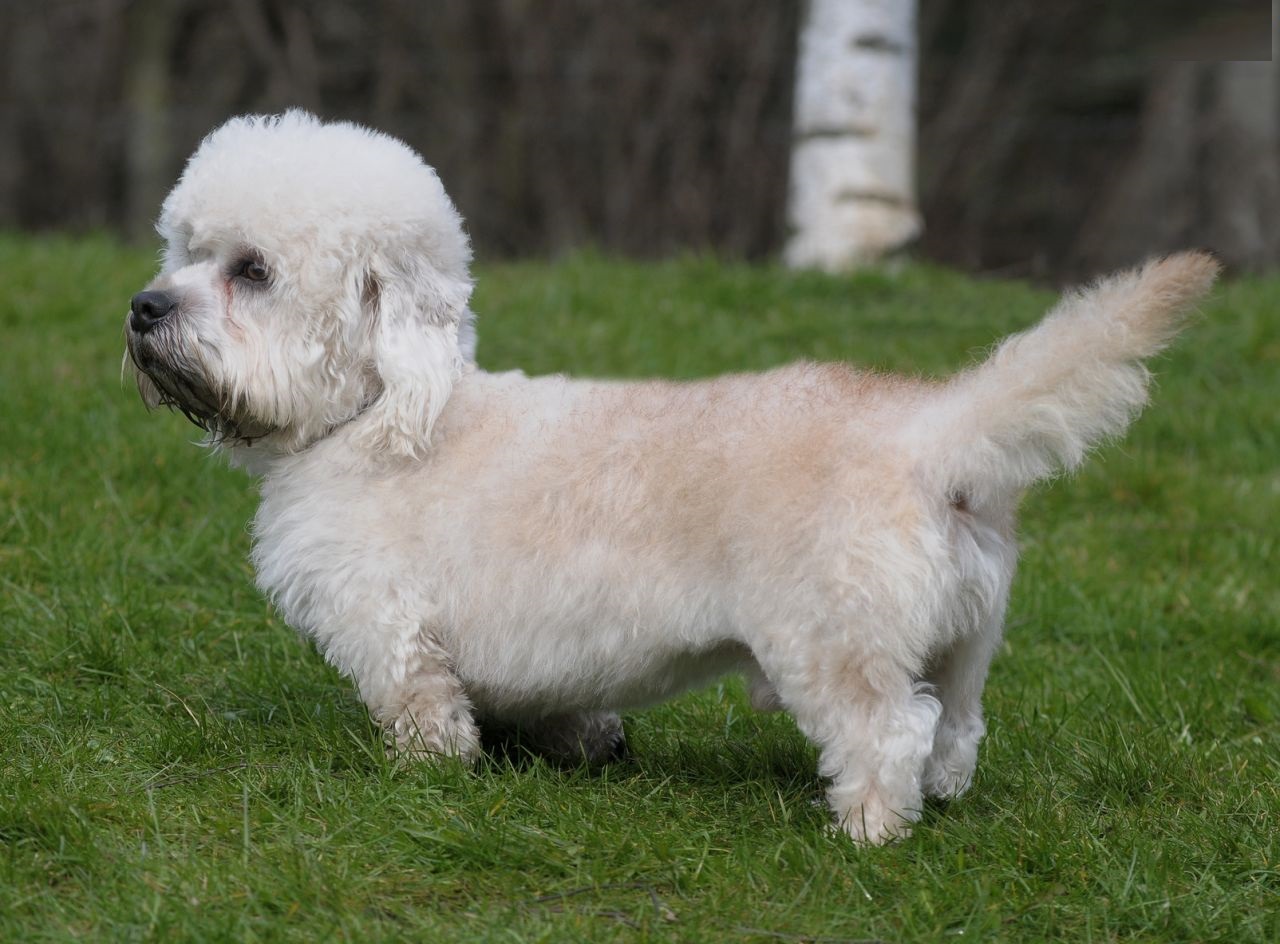
The Dandie Dinmont Terrier is a Scottish breed with a rich and charming history. It was developed in the border regions between England and Scotland, particularly in the 18th century, where it was used to hunt otters and badgers. Its unique body shape, with a long torso and short legs, made it ideal for digging and navigating tight burrows.
The breed gained fame when it was featured in Sir Walter Scott’s 1815 novel, Guy Mannering. A character in the book named Dandie Dinmont kept a pack of these distinctive terriers, and the name stuck. This makes the Dandie Dinmont Terrier the only dog breed named after a fictional character.
It was formally recognized in the 1800s and became a favorite of aristocrats and farmers alike, admired for both its hunting skills and endearing appearance.
Despite its charming look and delightful personality, the Dandie Dinmont Terrier remains a rare breed, even in its native UK. It is cherished by breed enthusiasts and terrier lovers who appreciate its distinct silhouette, silky topknot, and affectionate temperament. Its rarity adds to its noble and exclusive reputation.
Dandie Dinmonts have a unique appearance, often described as a cross between a sausage dog and a puffball—compact, with a silky head and long, low-set body.
• Coat: Soft, crisp double coat—mixture of hard and soft hair that’s longer on the body and forms a distinctive topknot on the head.
• Colors:
o Pepper (bluish-black to silvery gray)
o Mustard (reddish brown to pale fawn)
• Size:
o Height: 8–11 inches (20–28 cm)
o Weight: 18–24 lbs (8–11 kg)
• Head & Expression: Large, domed head with a long, low-set face and gentle, intelligent eyes.
• Ears: Pendulous and set low, covered with soft feathering.
• Tail: Curved like a scimitar, moderately long and thicker at the base.
• Body: Long and flexible with short, strong legs and a deep chest.
Despite their gentle look, Dandies are true terriers at heart—brave, clever, and full of character.
• Independent and Bold: Confident and willing to take on challenges, whether it's a stubborn task or new terrain.
• Affectionate with Family: Forms strong bonds, especially with one person, and loves to be involved in daily life.
• Quiet and Calm Indoors: Less yappy than other terriers—relatively quiet and well-mannered.
• Alert and Protective: Makes a good watchdog, though not overly aggressive.
• Playful and Fun: Retains a sense of humor and joy throughout its life.

This breed is ideal for those seeking a low-shedding, low-profile terrier that’s loving, unique, and manageable.
• Compact and Adaptable: Great for apartments or houses, content in urban or rural settings.
• Unmistakable Look: Its unusual silhouette, arched neck, and silky topknot set it apart.
• Balanced Temperament: Combines courage and calmness—less excitable than many terriers.
• Great for Individuals or Couples: Bonds deeply, thrives in a close-knit environment.
• Low Bark Drive: Doesn’t typically bark without purpose.
Though small, this breed has moderate grooming needs and a big need for mental stimulation.
• Training:
o Intelligent but independent—use positive reinforcement and consistency.
o Responds well to short, engaging sessions.
• Exercise:
o Needs daily walks and play, but not as intense as some working breeds.
o Enjoys games that tap into its problem-solving and scenting instincts.
• Grooming:
o Brush several times a week and trim the coat regularly to maintain shape.
o Pay special attention to the topknot, ears, and leg feathering.
• Nutrition:
o Feed a balanced diet appropriate for small, long-bodied breeds.
o Monitor weight to protect its long back from strain.
• Companionship:
o Loves to be close to its people—doesn’t enjoy being left alone for long periods.

The Dandie Dinmont is a generally healthy and long-lived breed (12–15 years), though it may be prone to:
• Intervertebral Disc Disease (IVDD) due to its long back.
• Glaucoma and Cataracts
• Obesity
• Dental Issues (common in small breeds)
Preventive vet care, regular dental cleanings, and joint support supplements can help your Dandie thrive.
Compared to the Scottish Terrier, the Dandie is less intense and more laid-back. Unlike the West Highland White Terrier, it is quieter and more reserved. Its softer personality and silky coat make it a unique terrier option for those who don’t want the high-energy antics typical of the group.
If you want a small, dignified, and loyal dog with a rare and charming appearance, the Dandie Dinmont is an excellent choice. It’s perfect for people who appreciate individuality, gentleness, and a touch of terrier spirit—without the rowdiness.
However, if you want a high-energy dog or one that tolerates long separations, the Dandie may not be ideal.
United Pet Club can connect you with knowledgeable breeders and adoption resources, along with offering care guides and training tips tailored to this rare breed.
Explore our platform to learn more about the Dandie Dinmont Terrier’s rich history, needs, and personality, and discover why this little dog with the big name might be the perfect companion for you.